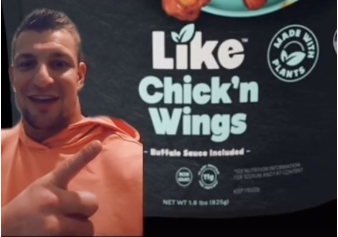For realtime insights, follow us on LinkedIn
A roundup of Stagwell’s work at Super Bowl 2022:
Stagwell’s agencies are transforming marketing – on one of the most captive fields for national marketing, the Super Bowl. Several of our agencies are showing up at the Big Game this year: Anomaly for Meta, Vroom and Expedia; 72andSunny for the NFL; Forsman & Bodenfors for Polestar; and more. Off the TV screen, our agencies are innovating with omnichannel efforts that tap into the fever and fandom of the big game to drive powerful consumer moments for their brand partners.
We believe that there’s a new definition of success for advertisers at the Super Bowl, and it’s driven by digital transformation and changing consumer expectations around brands and experiences. Stagwell is leading the charge in supporting brands as they navigate this new dynamic – explore Stagwell’s presence at The Game, both traditional and less so, below.
But before you dive in:
Captain Morgan x Anomaly
Captain Morgan’s high-tech punch bowl syncs with real-time game data to keep fans in the loop, even when they’re getting a refill.
Meet the Super Bowl snack table addition you never knew you needed: the Captain Morgan Super Bowl Punch Bowl. Anomaly worked with the Captain Morgan team to bring to life the bowl, featuring stadium-inspired lights and sound, Bluetooth speakers, subwoofers and LED graphic equalizers that sync with real-time game data to create an immersive brand experience.
Plus, don’t miss it’s apperance on Jimmy Fallon.
Cenex x Colle McVoy
Colle McVoy created a new campaign for Cenex that celebrates the quirky, charming and often humorous moments of connection that people experience at their local convenience stores. The campaign shows how its 1,500 locations in 19 states power communities while helping to connect people. It’s the next evolution of the brand’s successful Powered Locally platform and includes six :15 spots, two debuting in a few weeks during Super Bowl 56 in 20 Midwest regional markets.
Crosstown Rivals (premiering 2/13/22)
Local Entertainment (premiering 2/13/22)
CUE Health x Doner
Like COVID itself, at home testing company CUE is quick to adapt, putting together a spot in just eight days with Doner. Voiced by Gal Gadot, the ad positions the smart at home testing technology in conversation with a family’s other smart home devices – just another addition to the growing suite of at technologies that keep us safe, run more efficiently, and provide peace of mind. And while COVID is top of mind now, CUE promises that they’re just getting started.
How COVID Testing Brand CUE Put Together a Super Bowl Ad in 8 Days (AdAge)
Expedia x Anomaly
Ewan McGregor gives a convincing plug for the power of experiences over ‘stuff’
As the travel industry looks to continue to gain footing and recover from COVID-drivel losses, Expedia is leading the pack in its commitment to the Big Game with a spot created by Anomaly. With an emphasis on experiences over things, the spot aims to redefine the relationship between the platform and its customers, while challenging the expectations that travelers may have for Expedia and its sister brand, Vrbo.
‘Ewan McGregor and Expedia have Teamed Up to Give Away Free ‘Trips’ on Super Bowl Sunday’ (Forbes)
‘Why the 2022 Super Bowl Makes Sense for Brands’ (AdAge)
‘Can Super Bowl Ads Make Expedia Group the Nike of Travel?’ (AdWeek)
Groupon x Allison+Partners
Gronk is getting out of town… and opening his hope to one lucky winner for the experience of the lifetime.
Allison+Partners led PR for Groupon’s “Party Like a Player” Super Bowl sweepstakes campaign featuring Rob Gronkowski that underscored the brand’s positioning as the go-to experience marketplace. The team secured coverage in USA Today, TMZ Sports, ABC Audio, Travel + Leisure and many more resulting in 3.7B impressions (and counting) in its first week.
LikeMeat x 72andSunny
LikeMeat is celebrating the Big Game with a TikTok scavenger hunt, created by 72andSunny and Blue Hour Studios. To promote its plant-based Chick’n Wings product launch, LikeMeat has invited TikTok users to hunt for digital clues that crack a secret code. Those who unlock the code have a chance to win two free tickets to the Super Bowl as well as other LikeMeat-branded prizes. It’s yet another example of brands going digital-first for the big day, eschewing traditional spots for lower-budget, higher impact activations to connect with their audiences.
Why a plant-based food company started the first TikTok scavenger hunt featuring Gronk just in time for the Super Bowl (Digiday)
Got Milk? x GALE
The milk industry is making a statement at this year’s Super Bowl – that what you’re seeing on the field is not the whole picture. Their spot, airing on the NFL Network and created by GALE, is an inclusive look at the power of women in sport, even (and especially) where they aren’t expected. Featuring women from across the Women’s Football Alliance, the tagline “Football is Football” encourages a broader look at the game and the powerful changemakers behind it.
NFL x 72andSunny
After topping the USA Today Ad Meter last year, 72andSunny + NFL are returning to the screens this year just before halftime with another spot that aims to capture the magic, legacy and power of the game. Featuring cutting edge puppetry and CGI technology from experts at Swaybox, the ad features legendary NFL talent in unexpected places and spaces – bringing the game right into viewers homes. Get ready to bring down the house.
‘
”They Will Be Blown Away’: NFL’s Next Step in ‘Future-Proofing’ Audience Begins with a Super Bowl Ad’ (USA Today)
‘Behind the NFL’s Super Bowl Ad Plans, Which Include Puppetry and CGI’ (AdAge)
Polestar x Forsman & Bodenfors
In it’s first Super Bowl ad, Polestar, the high-end EV company with roots in Sweden, joined a spate of automakers – with a very different approach. The minimalist 30-second spot, executed by F&B, places a focus on what it doesn’t have – gimmicks, punchlines, scandals and distractions. It’s all about the future, driven by electric.
‘Swedish EV Startup Polestar Makes Super Bowl Debut with a “No Cliche” Approach’ (Ad Age)
Quest Oculus for Meta x Anomaly
In it’s first Super Bowl as the newly-rebranded Meta, Oculus Quest is doubling down on the metaverse, with a clear message to the audience – the metaverse is already here, and we’re waiting for you. The full spot, created by Anomaly and premiered on Good Morning America on Feb. 10, shows a metaverse in full swing – including a very-real post-game concert that will be headlined by the Foo Fighters. Its giving people a reason to visit the virtual reality world Meta is building – and pulling viewers into the future they are creating.
‘Inside Meta’s Super Bowl Commercial for the Metaverse’ (AdAge)
‘Meta’s Super Bowl Commerical Depicts Old Brand’s New Life in the Metaverse’ (AdAge)
Tillamook x 72andSunny
72andSunny created a shoppable, digital only music video, Chedderbration to mark National Cheddar Day coinciding with the Super Bowl. The multimedium campaign includes limited edition merch, unique cheddar-based recipes, and coupons accessible only through the Cheddarbration homepage.
Vroom x Anomaly
Vroom’s Super Bowl 2022 commercial sings the praises of a reliable broker – literally
Anomaly makes a return Super Bowl appearance with Vroom, the online car retailer who is literally singing the praises of having a reliable dealer on your side during the car selling process. The 30 second spot again features high-tempo choreography from celebrity choreograper Mandy Moore.
‘Vroom Releases Super Bowl 56 Ad ‘Flake: The Musical” (AdAge)
Related
Articles
Acquisition, In the News, Press Releases
Dec 30, 2024
Stagwell (STGW) Expands Digital Communications Capabilities in MENA by Agreeing to Acquire Create. Group, the Middle East’s Leading Independent Strategic Digital Communications Group

Acquisition, In the News, Press Releases
Dec 17, 2024
Stagwell (STGW) Furthers Global Expansion, Agrees to Acquire UNICEPTA, a Leading Provider of Media Intelligence

In the News, Weekly Data
Dec 05, 2024
WHAT THE DATA SAY: 20% might move if neighbors didn’t do holiday decorations
‘TIS THE SEASON TO DECK THE OUTDOORS: Holiday cheer influences…
Newsletter
Sign Up
CONTACT
hello@stagwellglobal.com
SIGN UP FOR OUR INSIGHTS BLASTS
Americans swear by the marketing value of the Super Bowl and a host of mythologies surround ideal slot placement, annual “best of” lists, and more. But price tags, declining viewership, and the global pivot away from traditional TV advertising makes us wonder. As the Super Bowl concludes and the Olympics continue, we asked global leaders from Stagwell and our affiliate partners for their thoughts on this key question: what is the value for modern brands in major sporting tentpoles like the Super Bowl, World Club or Olympics? Explore four POVs below.
WTF (Where’s the Freaking Value?)
Toby Southgate, Global CEO, Forsman & Bodenfors
Welcome, both linear and on-demand viewers, to the annual season of marketing insanity that is the Super Bowl. Welcome to lists, best-ofs, some epic voiceover casting and – for a limited time only! – music licensing and talent fees that’ll make grown adults weep.

This year, as happens with frequency on our rolling global events calendar, we get to layer the Winter Olympics on top of the Super Bowl boondoggle. “Where should I be investing my media dollars?” comes the plaintive cry of marketers across the land. “Who cares, it’s the freakin’ Super Bowl! Snap it up while you can!” And when snapping up comes in at a couple hundred thousand dollars a second – airtime only – then maybe a cynical voice of reason somewhere should ask the simple question: WTF? Where’s the Freakin’ Value?
Whoever it was who really said “half my marketing budget works, I just don’t know which half” could probably hold up the Super Bowl, or any one of the other tentpole global sporting properties, as the primus inter parus examples of this dichotomy. If you’re there and you get it right, people will talk about you. If you’re there and you get it wrong, people will talk about you. If you’re not there, people will talk about you not being there.
For Super Bowl specifically, there’s a purity of value by association that no other event can command. This remains the most-watched live event on the planet. It happens in one evening (unlike the Olympics or the FIFA World Cup), and – here’s the incredible part – it’s maybe the one televised event where real people in the real world will engage in conversations about the advertising they see. You could probably run a very simple segmentation analysis and find 3 major buckets of Super Bowl advertising – the funny, the emotional, and the weird. All have the power to engage and stimulate, or to isolate and offend. But what unites every marketer committing to this opportunity is the knowledge that just being there is no longer enough.
What happens around the 30 seconds your brand is on air? If you do break through sufficiently to provoke a conversation in the real world, how do you keep that momentum moving? How do you translate it into commercial impact? If your agency partners aren’t pushing that agenda as hard as they are the creative execution of the timing of the placement, then they’re not helping you resolve the “which half works?” question. Because now it’s all linked. And it all has to work.
Unifying Moments Make the Investment Worth It
Anna Panczyk – Chairwoman of the Supervisory Board, Brand New Galaxy, UK
For me, the answer is built into the question. Yes, the world is fragmented and people do feel disconnected – and so now, especially after the past two years, there’s a renewed impulse for people to find reasons to connect and be together. Sport offers a great way for brands to connect to families, groups of friends and fans – and sometimes even a whole country – with a straightforward common understanding and message.

Sports allows brands to generate this reach and awareness on a huge scale, but also to tie itself into those personal feelings of togetherness, connection, pride. Sport involves powerful emotions – and let’s not forget, playing, watching and sporting is enjoyable and fun.
On the other hand, being directly commercially involved in these sort of events is one of the most expensive routes to market. Brand Keys research (https://brandkeys.com) showed that only about 20% of the brands that advertise during prestigious events like the Super Bowl actually emotionally engage viewers. So, you could say – and many do - that involvement like this s a waste of money. But the actual impact of these things is harder to measure. There are plenty of Olympic or Super Bowl ads that stay with you, resonate beyond, become shared, transform into memes. And there are plenty of lower–level activation that don’t carry the same cost, but still allow brands to benefit (activations on social media, sales promotions etc).
What sporting events prove to us every time is that it is always about the journey you take, not just the ultimate goal. And the same logic applies to those great campaigns which – yes, at the level of buying a Super Bowl ad, can also be hugely expensive. But brands continue to recognise the fact that these are rare and unique moments to be shared with their potential users or brand lovers. Moments of national unity, mass awareness, positivity, togetherness and fun – which brand wouldn’t want to get involved?!
Sport is the New Fireplace in a Modern Household
Ashish Khazanchi – Managing Partner, Enormous Brands, India
Where does broadcast stand in the time of Reels, Stories, OTT and the severely divided attention economy? Sport, for most, is possibly the last remaining bastion of appointment viewing across the world. The bigger the stage, the bigger the draw of it.
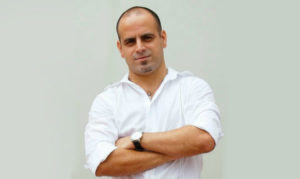
Events like the Super Bowl, FIFA, Olympics, IPL are important for brands for reasons larger than just the univariate way of looking at it for pure reach. The key for brands really is the intense engagement. Sport for most audiences is a part of identity, and identity narratives. There’s intense identification with the heroes and the myths and their teams. This makes big sporting moments the last remaining lean-forward viewing platform in the era of skip ads and incessant scrolling. Sport is the new fireplace in a modern household. It gets families, friends and communities together. There’s joy, conversations, laughter, tears, jubilation and people huddled together over shared nervous energies. These moments are prime for brands to tap into this energy and audience engagement to drive the conversations towards greater brand love.
How Can Culturally Important Moments Help Tell Brand Narratives?
Daniel Felipe Cuervo – Strategic Planning & Growth VP, Buentipo, Colombia
Culturally important moments for each country, such as the Super Bowl, World Cup, or Olympics, are moments that brands should take advantage of, for the good and not for the bad. These types of events are perfect for brands to talk about their values and beliefs beyond the product they want to advertise or sell.
The budget investment that brands need for these spaces should be leveraged as a long-term strategy, rather than their bottom lines in the short-term. Our recommendation to brands: Be smart. Take advantage of this space to create advertising pieces that are highly relevant and above all, tell a story that answers why your brand exists. Go beyond the hunger to sell your product and use this as a chance to communicate your purpose, values and beliefs as a brand.
Follow Stagwell on LinkedIn to keep up with the latest news, work, and perspectives from the global Stagwell network.
Related
Articles
In the News, Press Releases, Thought Leadership
Oct 30, 2024
77% of CEOs Say the Election Will Impact their 2025 Business Strategy; 85% are Bullish on Investment in the Gulf Region, Reveals Stagwell (STGW) Survey
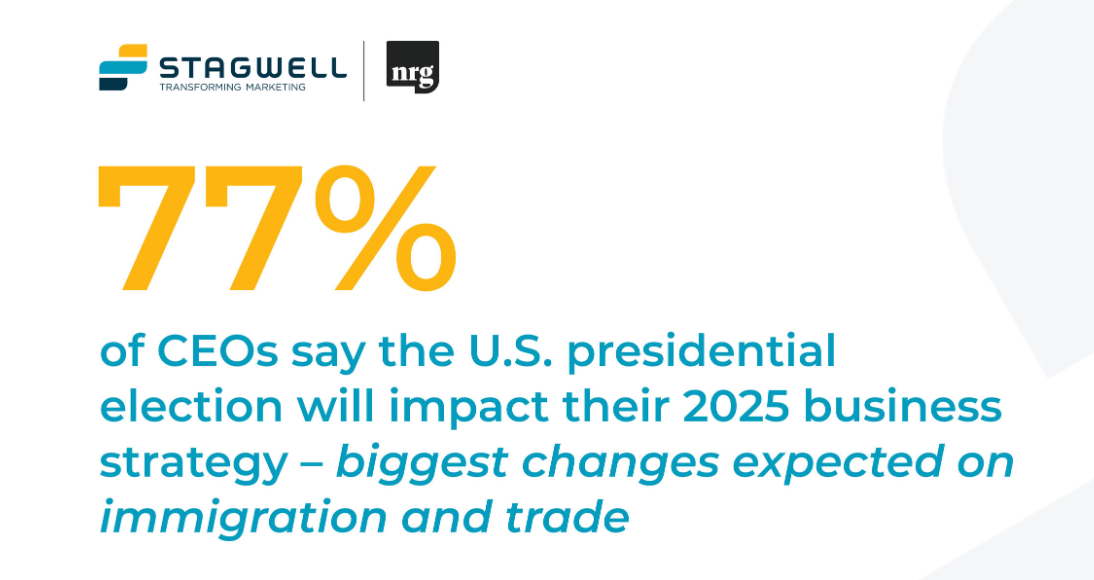
Marketing Frontiers, Thought Leadership
Jul 26, 2024
Game On for In-Game Advertising? Four Things Marketers Should Know About Gaming
It's clear from dozens of Stagwell’s interviews with senior marketers…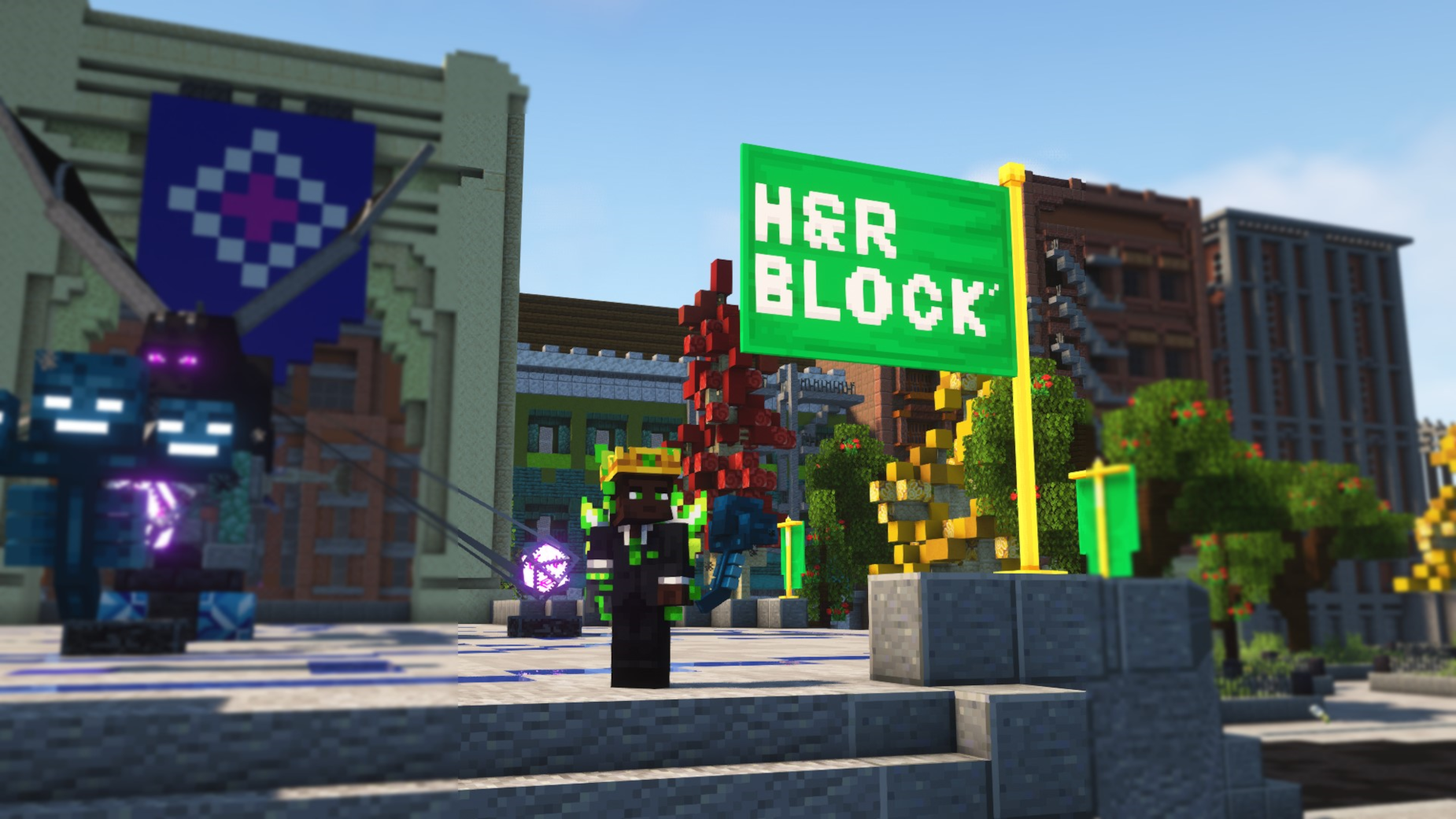
Thought Leadership
Jun 28, 2024
Hitting the Mark: Future of News Takeaways from Cannes Lions
Stagwell brought the Future of News to Cannes Lions, where…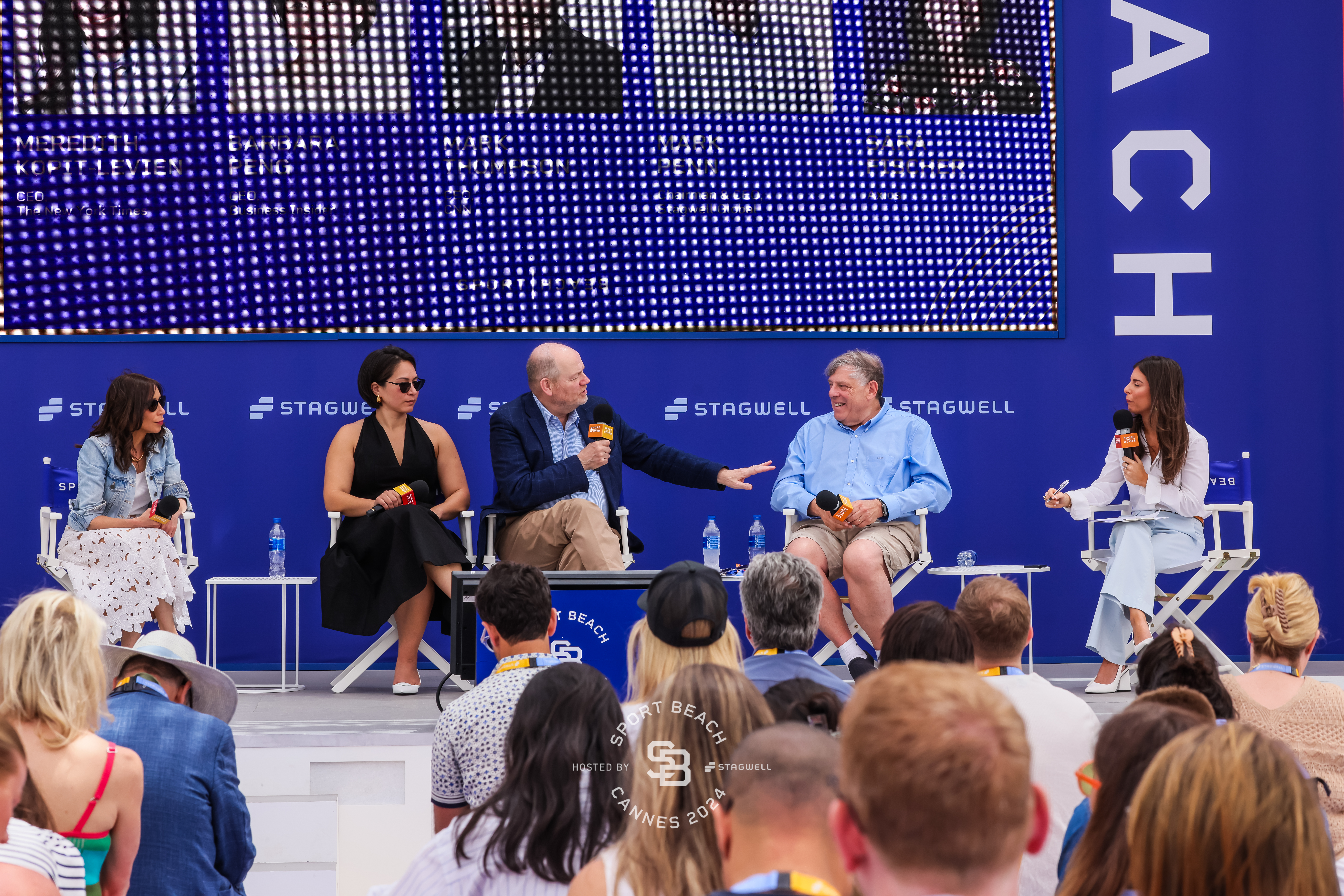
Newsletter
Sign Up
CONTACT
hello@stagwellglobal.com
SIGN UP FOR OUR INSIGHTS BLASTS
Major M&A moves are underway in the gaming space. Microsoft’s acquisition of Activision and Sony’s of Bungie will have repercussions for how brands and advertisers approach the gaming industry, the most lucrative entertainment sector, set to grow from $173B in 2021 to $223B in 2022.
The TL;DR?
Streaming wars? More like gaming wars. Content is king and the platforms with the most enticing portfolio will win the market.
DTC distribution is not just for DTC brands. Cloud gaming is diversifying the strategies brands can use to get the right content in consumers’ hands.
Metaverse on the mind? The capital “M’ is driving recent consolidation but the jury’s out on how deeply gaming brands will dig into Web 3.
By Collin Leirvik, SVP, Head of Gaming, National Research Group
These recent acquisitions signal a similar trend to what we’ve seen across other forms of media: technology (i.e., cloud) provides new methods for brands to diversify their direct-to-consumer distribution strategies. Tethering content to specific hardware devices may still make the best business sense in gaming (for the moment) but is increasingly less essential from a technological standpoint.
In practice, this changes the equation for gaming brands – the goal goes from selling copies of a game or units of hardware to competing to develop complete, desirable, consumer-centric ecosystems that include both content and innovation in direct-to-consumer distribution.
As we’ve seen in the streaming wars most recently, content is king. The platforms that offer the most enticing overall portfolio of content are winning market share. The same is true in gaming: the totality of experiences a gaming brand provides have and likely will continue to form the basis of their brand equity with consumers.
It’s hard to justify limiting the audience of a game that costs hundreds of millions of dollars to develop by tying it to a single platform/install base. It is yet to be seen how these recent acquisitions will be leveraged in terms of content exclusivity, but these trends in the transformation of distribution are clearly a major factor justifying recent acquisitions.
Due to these dynamics, acquiring studios has always been a growth strategy for gaming brands. However, factors in content development somewhat unique to the industry – especially long development lead times, expense, and risk – have held consolidation in check. It’s hard to justify limiting the audience of a game that costs hundreds of millions of dollars to develop by tying it to a single platform/install base. It is yet to be seen how these recent acquisitions will be leveraged in terms of content exclusivity, but these trends in the transformation of distribution are clearly a major factor justifying recent acquisitions.
The metaverse – and its role in allowing gaming brands to drive greater depth of experience and touchpoints with players with their tentpole franchises – is another driver behind recent content consolidation. The gaming industry has long been a leading force in creating dynamic, online social platforms – the core of what many associate with the recently popularized “metaverse” term. The extent to which brands will also be bullish on blockchain, NFTs, and other emergent innovations woven into to the metaverse and Web 3.0 is yet to be seen. But there are signs that many brands are ready to start experimenting.
Related
Articles
In the News, Press Releases, Thought Leadership
Oct 30, 2024
77% of CEOs Say the Election Will Impact their 2025 Business Strategy; 85% are Bullish on Investment in the Gulf Region, Reveals Stagwell (STGW) Survey

Marketing Frontiers, Thought Leadership
Jul 26, 2024
Game On for In-Game Advertising? Four Things Marketers Should Know About Gaming
It's clear from dozens of Stagwell’s interviews with senior marketers…
Thought Leadership
Jun 28, 2024
Hitting the Mark: Future of News Takeaways from Cannes Lions
Stagwell brought the Future of News to Cannes Lions, where…
Newsletter
Sign Up
By Stagwell Insights
CONTACT
hello@stagwellglobal.com
Marketing Frontiers is a new series from Stagwell exploring the methods, mediums, and messes modern marketers will grapple with over the next decade as they chart transformation in the discipline. This January, Stagwell is exploring the new frontiers of Augmented Reality.
Retail happens at the convenience of the consumer.
AR can change when and where brands build experiences, the discovery-to-purchase funnel, and how brands navigate the blended shopping experience.
Three trends will lead retail AR: Try Before You Buy, New Discovery Dimensions, and the Gamification of Retail.
The next decade of retail will no longer unfold on a brand’s terms. Digital transformation and the blending of in-person and physical experiences means commerce happens at the consumer’s convenience: on mobile devices, in between meetings, on the subway, and everywhere in between. This pivot will fundamentally change when and where brands build experiences, the discovery-to-purchase funnel, and the need for solutions that adopt the functional convenience of brick-and-mortar retail across any digital platform.
This change is more of an opportunity than a challenge. Mobile AR in retail has unlocked three trends worth capitalizing on for brands seeking creative strategies for adopting AR across their retail experience.
Try Before You Buy
Apparel and home goods have fine-tuned the use of mobile AR to “try before you buy,” allowing consumers to scale clothing sizes to their figure using their cellphone’s cameras or gauge whether a futon will fit in their apartments. Brands that haven’t sought ways to activate mobile AR yet should jump on the trend. Those who have should look for opportunities to push beyond rendering individual products in mixed-reality to build entirely virtual closets and storefronts, in line with the experiments brands like Kohl’s, FaceCake, and Snap have pioneered.
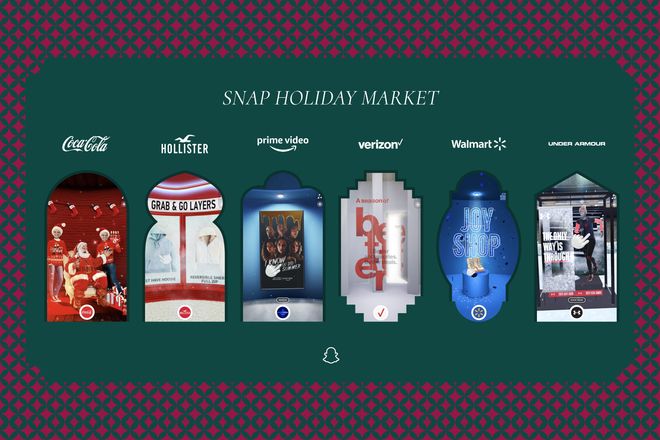
Give consumers the ability to purchase, try on, see reviews, engage with a customer specialist, and more without leaving the comfort of their homes, and you crack the convenience code. Imagine the world of possibilities for more addressable marketing, influencer integrations, and social commerce.
AR isn’t just landscape for apparel and home goods. Food and CPG brands might foray into more AR content experiences that illuminate how their products can be blended to create exciting recipes. Picture Kraft or Nestle emblazoning their packages with QR codes that activate AR chef’s assistants on mobile to teach you the perfect way to blend pantry staples to make a complicated feast.
New Dimension for Discovery
The importance of convenience for consumers in the digital era doubles as an attention and discovery problem. Besieged by brand messaging, consumers have difficulty finding relevant and valuable marketing and promotions when they desire them. Those with smaller marketing budgets struggle to make noise in the din, barred from prime advertising real-estate. AR unlocks a new layer or dimension of marketing that can power intelligent, sustainable content opportunities to aid today’s brands in discovery. Location-specific AR overlays can add flair to major promotions, bring virtual participants closer to the brick-and-mortar experience, and transform common areas like subway trains or city parks into rich canvasses for marketing integrations.
Savvy businesses might partner with regional publishers for guerilla OOH activations, placing QR codes at major city throughways that open up an AR directory of local retailers, shopping centers, and other nearby experiences. This would allow consumers to access an engaging universe of directional content while cutting expenses for regional media distribution and carving out more stages for branded placement and authentic advertising.
Gamification of Retail
The trend towards experiential retail underscores a key point about today’s consumers: digital experiences are never wholly individual. It’s why AR shows such promise for live events and retail. If you can add a layer of shared competition to your retail experiences, you can power deeper consumer engagement. Sporting apps that pit peers against each other to meet fitness goals could enhance that experience with an AR layer that allows for connection with nearby runners, displays local challenges like conquering a particularly steep hill, and rewards users with a coupon or digital assets.
In-store brands might roll out limited-time activations like scavenger hunts to encourage shoppers to engage with as many AR-powered product displays as possible to unlock additional savings at the counter. A retailer might also add an AR layer encouraging added engagement with overstocked items, bring product displays to life with virtual influencers rendered in AR, or use augmented reality content to add local color about in-store products. With experiments in NFTs and other virtual tokens and commodities, brands have an array of new tools at their disposal to encourage and reward hybrid engagement.
What to do?
Our verdict: now is the time to experiment with and fine-tune brand-relevant strategies for working AR layers through the marketing stack. Mixed reality can be a serious investment. Brands should look for existing partners who can help deliver AR technology via platforms consumers are already engaging with to minimize the start-up costs of a new foray into AR.
The question of budgets and investment aside, our advice about AR mirrors our advice about many new marketing frontiers: before running blindly in their pursuit, ensure the technology is additive to the digital layer of your brand. Ask yourself how AR will add dimensionality or a compelling new flavor of experience to the products and services you provide your consumers. We are bullish that AR’s value is creating shared experiences and enhancing convenience for today’s consumers. If your AR strategy doesn’t accomplish those two goals, you may be better off experimenting with other modern digital marketing tools.
Finally, AR and the industry-wide focus on the metaverse is an opportunity to push innovation and creativity further than ever before. Don’t just replicate content and experiences in AR; redefine them. View augmented reality as an opportunity to unlock new ways to connect and communicate with your brand’s consumer base and zealously chase a more creative future.
Related
Articles
Acquisition, In the News, Press Releases
Dec 30, 2024
Stagwell (STGW) Expands Digital Communications Capabilities in MENA by Agreeing to Acquire Create. Group, the Middle East’s Leading Independent Strategic Digital Communications Group

Acquisition, In the News, Press Releases
Dec 17, 2024
Stagwell (STGW) Furthers Global Expansion, Agrees to Acquire UNICEPTA, a Leading Provider of Media Intelligence

In the News, Press Releases, Stagwell Marketing Cloud
Dec 04, 2024
Stagwell Marketing Cloud’s The People Platform Appoints George Brady as CEO

Newsletter
Sign Up
What are the forces at work reshaping the way brands and marketers connect with today’s consumers? The next decade of marketing innovation will be driven by the emerging technology piquing consumer, brand, and investor interest today: new mediums of storytelling unlocked by mixed-reality, new methods of communicating powered by social commerce, and problems to pre-empt driven by convergent social forces and the enduring digital acceleration.
Stagwell is all about transforming marketing – and we’re spending the year working with our agencies to explore how the most innovating and compelling opportunities in new frontiers will transform the way brands and marketers do business.
We’ll…
explore the practical, helping you understand things like if and how your brand should integrate virtual influencers in digital marketing efforts.
probe the conceptual…with questions like what responsibility brands have as they begin to imagine marketing and brand identity in space?
offer strategies for making sense of the monumental…with perspectives on how and when brands should get involved in the bourgeoning metaverse.
Meet Marketing Frontiers – Stagwell’s new content series that will unpack these blue-sky ideas before today’s brands, simplifying the future and helping leaders understand how these concepts will change the way we do business today and tomorrow.
Originally released on
CONTACT
Lorem Ipsum
FEATURING
Related
Articles
Artificial Intelligence, Events, In the News, Marketing Frontiers
Sep 23, 2024
AI, Apps and All-Stars: A Digital Ecosystem Connecting Athletes and Brands at Cannes
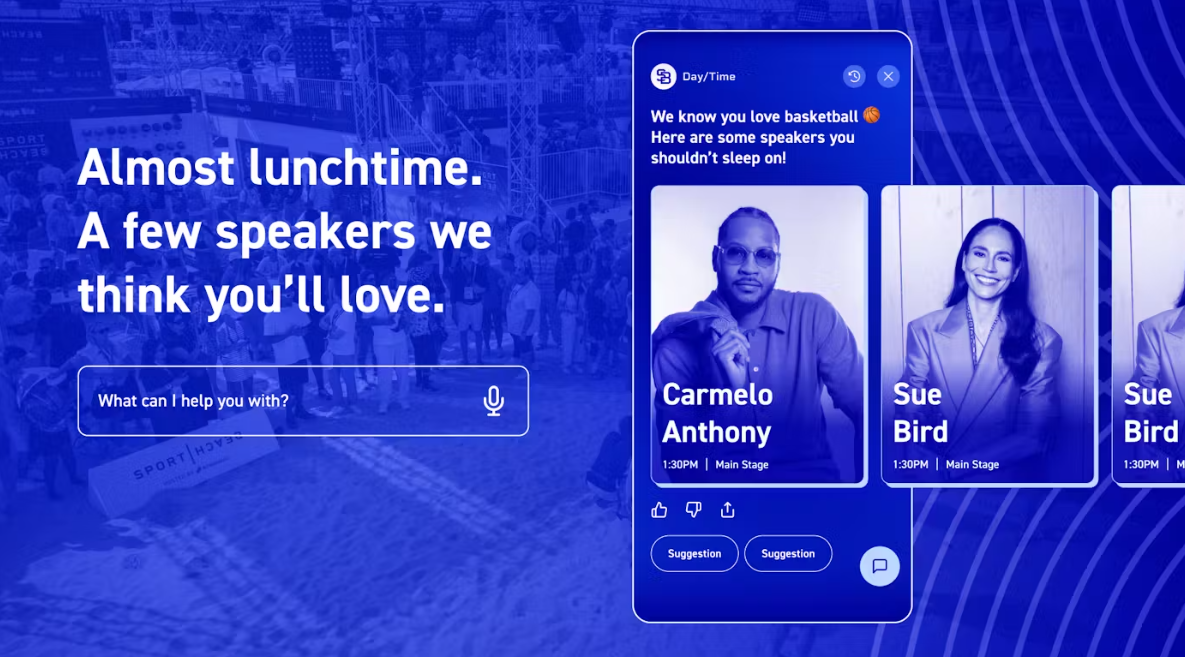
Augmented Reality, In the News, Marketing Frontiers, Press Releases, Stagwell Marketing Cloud
Aug 26, 2024
ARound, Minnesota United FC, and Target Unveil First-Ever In-Stadium AR Experience in Major League Soccer
ARound's Stadium-Level Technology Transforms the Fan Experience for Sports Teams,…
Data, Press Releases
Jul 31, 2024
Majorities of U.S. women agree – there isn’t enough focus on postpartum healthcare for mothers, they are often forgotten once baby arrives
New Survey by Stagwell (STGW)'s The Harris Poll Highlights Critical…
Newsletter
Sign Up
Originally released on
LOS ANGELES, Jan. 24, 2022 /PRNewswire/ — Today, Brand Innovators, the largest community of brand marketers, have announced their fifth annual Sports Marketing Upfronts presented by 72andSunny and hosted at the Porsche Experience Center in Los Angeles (19800 South Main Street, Carson), Tuesday-Thursday, February 8-10, 2022.
The three-day summit will bring together marketing executives from Fortune 500 and other leading brands ahead of the big game to learn and share how they are leveraging the intersection of sport and entertainment to drive business results in an ever-changing landscape. Current brands featured include: Anheuser-Busch InBev, Bose Corporation, Chipotle Mexican Grill, FanDuel, Nationwide, PepsiCo, United Airlines, and many more! ️
“We are so excited for the latest edition of The Brand Innovators Sports Marketing Summit in LA, featuring the ‘who’s who’ of senior marketers and industry leaders from the NFL and brands like AB InBev, PepsiCo, Frito-Lay, Microsoft, Nationwide, Danone, EA Sports, State Farm, and many more,” said David Teicher, Chief Content Officer, Brand Innovators. “We are bringing the community together to tackle the latest and most innovative sports marketing and sponsorship efforts, and the most important topics, challenges, and opportunities facing the industry today, as marketers continue to strive for ever-elusive cultural relevance.”
“With one of (if not the most) entertaining sporting events of the year held in our backyard, it felt only fitting to collaborate with industry creators and marketers to celebrate innovation,” said Damaune Journey, Global Chief Growth Officer, 72andSunny. “As an agency that believes in creativity that wins and diverse points of view, we are thrilled to be this year’s leading sponsor and to showcase those at the forefront of game-changing ideas.”
“Across every sector, marketing is transforming, driven by new consumer behaviors, needs and emerging technologies. Stagwell’s agencies have a long track record of helping brands innovate at the big game, often setting the year’s agenda for creative brand marketing,” said Stagwell Chairman and CEO Mark Penn. “We’re proud to partner with Brand Innovators and 72andSunny this year to discuss the marketing transformations underway.”
The summit will be a hybrid event with in-person programming reserved exclusively for qualified brand-side marketers and active paying sponsors. The summit will also be made available virtual to the public. Attendees may register at brand-innovators.com.
About Brand Innovators:
Brand Innovators is an exclusive community of brand marketers from the world’s top brands, gathering regularly for thought leadership conferences, virtual livecasts, and social events. Formed in 2011, Brand Innovators focuses on sharing knowledge about marketing and technology among fellow industry leaders.
About 72andSunny:
72andSunny is a global creative agency that believes in creativity that wins. With offices in Los Angeles, New York, Amsterdam, Singapore and Sydney, 72andSunny is on a mission to expand and diversify the creative class.
72andSunny has been recognized as one of Fast Company’s Most Innovative Companies for two years in a row, a two-time “Agency of the Year” winner for Advertising Age and Adweek and Entertainment Agency of the Festival at Cannes Lions in 2021. For more information, visit 72andSunny.com.
About Stagwell, Inc.:
Stagwell is the challenger network built to transform marketing. We deliver scaled creative performance for the world’s most ambitious brands, connecting culture-moving creativity with leading-edge technology to harmonize the art and science of marketing. Led by entrepreneurs, our 10,000+ specialists in 20+ countries are unified under a single purpose: to drive effectiveness and improve business results for their clients. Join us at www.stagwellglobal.com.
Contact: Meghan Hubert
meghan@brand-innovators.com
201-783-3867
Related
Articles
Acquisition, In the News, Press Releases
Dec 30, 2024
Stagwell (STGW) Expands Digital Communications Capabilities in MENA by Agreeing to Acquire Create. Group, the Middle East’s Leading Independent Strategic Digital Communications Group

Acquisition, In the News, Press Releases
Dec 17, 2024
Stagwell (STGW) Furthers Global Expansion, Agrees to Acquire UNICEPTA, a Leading Provider of Media Intelligence

In the News, Press Releases, Stagwell Marketing Cloud
Dec 04, 2024
Stagwell Marketing Cloud’s The People Platform Appoints George Brady as CEO

Newsletter
Sign Up
By Mark Penn, Chairman and CEO, Stagwell
and Josh Beatty, Founder and CEO, ARound
CONTACT
Mark Penn
mark.penn@stagwellglobal.com
FEATURING
Marketing Frontiers is a new series from Stagwell exploring the methods, mediums, and messes modern marketers will grapple with over the next decade as they chart transformation in the discipline. This January, Stagwell is exploring the new frontiers of Augmented Reality.
Event-based AR can help marketers attract audiences at scale for new forms of shared, blended, and branded experiences.
We tend to envision AR as a means of distraction but there is transformative power in combining the physical and the augmented for highly immersive, interactive experiences.
AR at live sporting events can help create persistent, relevant, and shared experiences that will engage casual fans while enhancing the experience for sports fanatics.
Augmented reality has transformed from a bespectacled fad to an emergent marketing frontier for modern brands in recent years. Still, there is still much work to be done to create AR audiences at scale, attracting the masses.
Why is it hard to scale AR? Because – to date – AR has focused on the individual. We believe that the transformational power of AR is in creating experiences that bring people together around a common place and purpose. Purely functional applications like seeing how a piece of furniture might fit into your home are useful but do little to attract the mass consumer audience AR needs to go mainstream.
What if instead we focus our AR experimentation on augmenting shared experiences like sporting events, in stadiums with captive audiences that are naturally some of the most enthusiastic consumer bases in the world? As sports leagues adapted to the pandemic, marketers learned consumers hunger for more dynamic engagement with their favorite teams and players. They want to get closer to the action, closer to the players, and bond with one another over experiences they’ll remember for a lifetime.
Let’s use AR to get there. We believe sports brands have a strong opportunity to power more immersive and meaningful experiences with the next frontier of augmented reality: event-based AR.
The promise of event-based AR is to bring content to context, providing for more immersive and meaningful experiences connected to the events and people around us. AR can fuel moments of catharsis for the consumer, creating powerful emotional connections to brands, stadiums, and other key fan and player locations.
We already know sports fandom is a lifelong affiliation. Augmented reality can help brands extend that fever into a new dimension, offering interaction, socialization and new forms of connection
ARound helps venues and retailers create augmented reality experiences for live events, bringing audiences together at scale where they can play, interact, and socialize in completely new and exciting ways.
‘Mario Party But With 30,000 People’
Sports marketers can use augmented reality to power stronger consumer experiences with fun, relevant, and shared brand moments.
The transformational power of AR is in creating experiences that bring people together around a common place and purpose.
Building Fun Moments
Every Thanksgiving, one relative is bound to recount an infamous fly-ball he caught from the seats at a baseball game growing up. And even the least sports-engaged Bostonian becomes a model hometown fan when the Patriots are due for more Super Bowl wizardry. Sports marketers know best that the memories fans make at sporting events are some of the most persistent experiences they’ll have in their lives.
So why not use AR to bring more of those experiences to a wider swath of fans?

Everyone might not be able to carry a flyball away with them as a lifelong souvenir, but every fan can experience moments that will turn into memories. With AR, fans in seats with lackluster angles can be brought into the action while players personalities can become larger than life, creating memorable moments that will dominate social media. Adding more experiential touchpoints via AR can make a standard Sunday game fodder for “remember when!” stories for years to come.
Serving Relevant Content
Using AR to add context to content can help brands further engage consumers on location, arming them with an agile new tool for building the compelling experiences that drive value. With event-based AR integrations, brands can adapt flexible content based on everything from proximity to the main stage to the affiliations of fans. Advertising in-game can be tailored, too, to reflect first-party inputs like a consumer’s favorite sports team, hometown, and more. Ultimately, the tech will serve as a powerful way to recapture and convert attention otherwise lost to consumers’ mobile browsing habits during live events.
Keeping fans engaged before, during, and after the game with personalized content enables a myriad of brand integrations. With just baseline first-party data input by users about team fandom, hometown, favorite players and preferences for merchandise, a whole universe of addressable AR content opens up, activated through their mobile devices.

Creating Shared Social Experiences
Let’s be honest: while fans may be physically captive, of a sort, at in-person sporting events, it’s another game to capture and keep their attention. At the same time, sports is inherently social – something that positions it well to beat the AR trap of failing to scale by being mired in individual experiences. Leveraging AR to extend shared moments through every part of the game will help build closer connections between teams, players, and their fans, bringing talent on the field to life in multi-sensory, bigger-than-life arenas.
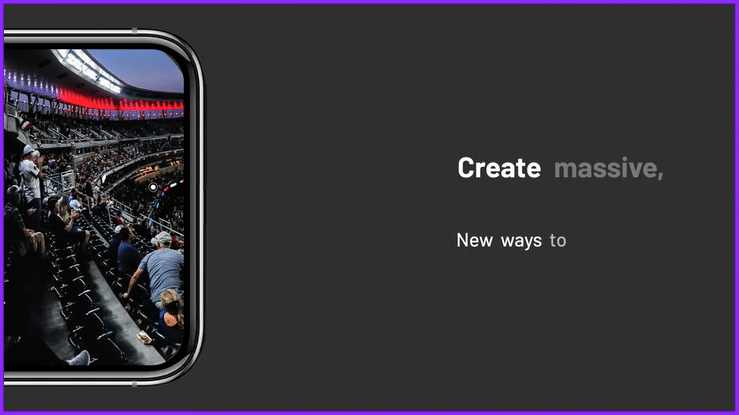
Layering gamified content, player stats and optional replays in AR during games can keep fans focused on and interacting with the field. Brands might stoke team rivalries with interactive competitions during games, with fans’ actions contributing to an aggregate team score. At the end of a game, fans from the winning team might get virtual collectibles or NFTs that build up to larger prizes with more and more engagement at AR-enabled locations, ultimately winning season passes or exclusive IRL merchandise. During intermissions, fans could open their phones to participate in competitions like tug of war fueled by the in-app engagement of 30,000 people, with rival team mascots scaled as AR avatars on the field. You can even imagine beloved mascots like The Phillie Phanatic or Mr. Met swarming the field with AR-doubles for intermission shows that extend beyond the physical to engage fans throughout the entire stadium, not just close to the field.
While our focus is ostensibly on AR moments connected to physical locations and powered by mobile, it’s not hard to see how marketers can activate AR-integrated apps or hardware to plug at-home fans into live sports.
Related
Articles
Acquisition, In the News, Press Releases
Dec 30, 2024
Stagwell (STGW) Expands Digital Communications Capabilities in MENA by Agreeing to Acquire Create. Group, the Middle East’s Leading Independent Strategic Digital Communications Group

Acquisition, In the News, Press Releases
Dec 17, 2024
Stagwell (STGW) Furthers Global Expansion, Agrees to Acquire UNICEPTA, a Leading Provider of Media Intelligence

In the News, Press Releases, Stagwell Marketing Cloud
Dec 04, 2024
Stagwell Marketing Cloud’s The People Platform Appoints George Brady as CEO

Newsletter
Sign Up
This week marked the National Retail Federation’s 2022 conference, the premiere summit of the world’s largest retailers. Stagwell was listening in, as well as talking with lead retail experts and practitioners from brands like Johnson & Johnson, AERIN, Bayer, Snap, and more.
So what do marketers need to know? We recap the top five trends and takeaways to emerge from the week below.
If you’d like to learn more, email Beth Sidhu. Interested in more retail insights? Click here for our retail report card and please sign up for more insights here.
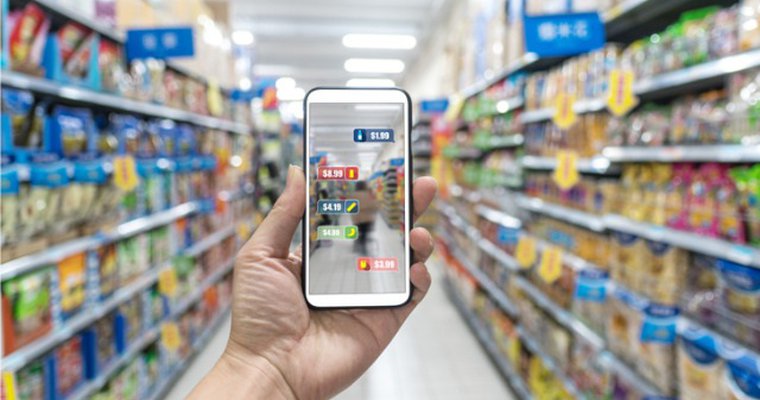
1. Blended Retail Experience is Here to Stay
The pandemic accelerated a new template for the shopper journey that sees consumers move frequently across brick-and-mortar and digital touchpoints. Consumers want to shop, browse, and discover on their own terms, using the full range of devices, delivery mechanisms, and in-store ecosystems available to them. Expect retail to continue to trend towards convenience – defined on the consumer’s terms – that is supported by digital layers that add function, streamline experiences, or collapse multiple aspects of the purchasing funnel. Marketers need to invest in seamless handoffs between touchpoints urgently.
2. Safety Will Keep Driving In-Store Shopping Behavior
With variants extending the pandemic for who-knows-how long, health and safety will continue to be top of mind for consumers. Telegraphing your brand’s investment into COVID-19 protocols without veering into the realm of pandemic theater/fearmongering is one way brands can remain in favor with today’s consumers. Marketers should ensure their messaging around safety connects with reality for employees, as the employee-as-brand-ambassador trend popularized by big box retailers like Walmart continues.
3. If Your Commerce Isn’t Connected, What Are You Doing?
Enduring supply chain disruptions will put additional pressure on retail shops to adapt technology and digital tools to further connect their enterprises. To keep apace with customer expectations for faster delivery and order fulfilment, brands need to adapt sophisticated inventory tracking and real-time retail dashboards, as well as look to further synchronize marketing and sales activities.
4. Social Commerce Gets a Lift From Live Streaming
Live commerce – a staple abroad but gaining traction across the U.S. – will mainstream in 2022 as brands need to bridge consumers’ platform and content experiences with their shopping habits. The models abound, from the 24-hour shopping livestreams that drive billions in sales during China’s major retail holiday, Double 11, to more curated influencer streams that tap into micro and nano influencers to tell the stories behind products in more authentic ways. This engagement renaissance will be powered by integrated payment portals, QR codes picture-in-picture digital displays, and other technology enabling a seamless step-through discovery to purchase.
5. Retail Cautiously Experiments with the “M” Word
In the absence of the technology infrastructure to support the much-buzzed about Metaverse, retailers are experimenting with what’s available now – mixed reality tools — to power exciting new experiences that tie the physical world to the digital world. Live events and retail supported by augmented reality can power more engaging shared experiences for consumers, while virtual tokens, avatar outfits, and other digital tokens can extend a brand’s product suite into this burgeoning new dimension of the web.
Related
Articles
In the News, Press Releases, Thought Leadership
Oct 30, 2024
77% of CEOs Say the Election Will Impact their 2025 Business Strategy; 85% are Bullish on Investment in the Gulf Region, Reveals Stagwell (STGW) Survey

Marketing Frontiers, Thought Leadership
Jul 26, 2024
Game On for In-Game Advertising? Four Things Marketers Should Know About Gaming
It's clear from dozens of Stagwell’s interviews with senior marketers…
Thought Leadership
Jun 28, 2024
Hitting the Mark: Future of News Takeaways from Cannes Lions
Stagwell brought the Future of News to Cannes Lions, where…
Newsletter
Sign Up
FEATURING
As we reflect on the marketing implications of CES 2022, Web 3.0 is by far the most impactful development that showed up across industries, technologies and capabilities. While in some ways it may be another victim of CES’ shiny veneer versus reality, there are components that are impossible to ignore – namely, the influx of and investment in the metaverse and NFTs.
Stagwell is one of the first movers when it comes to helping brands activate in this nacent space, having supported the launch of MilkPeP’s activation in the Roblox metaverse. On Thursday, January 6, Stagwell convened a lunch and learn, moderated by Axios’ Sara Fischer, to discuss the tactical and theoretical challenges and opportinities presented by Web 3.0. Here are our top 5 takeaways from the conversation:
- COVID WAS A CATALYST, bringing the metaverse into the real world
- BRANDS WILL PLAY A KEY ROLE IN BUILDING TRUST with these technologies and platforms
- NOT EVERY BRAND SHOULD BE IN THE METAVERSE, and not every metaverse is created equal
- METAVERSE + IRL should be a seamless experience
- NFTS are here to stay
Web 3.0 is a nuanced topic, and one that is the opposite of a one-size-fits-all approach. Depending on brand, product, buyer demographic and existing marketing activity, the metaverse and NFTs can fill a very important role (which may be… no role at all. More on that later). Learn more about what it means for brands, creative and the future of the online/offline world.
Praesent rutrum gravida consectetur. Cras vitae pretium urna. Phasellus aliquet, lacus dictum consequat tempor.
1. COVID was a catalyst, bringing the metaverse into the real world
The metaverse would have come eventually (in fact it’s already been here…hello, gaming community!), but the pandemic undoubtedly accelerated the timeline. With the majority of the world going digital, tech companies were pushed to develop products, tools and software that allowed us to do so much more from a virtual setting, exposing a more urgent demand for expanded virtual experiences and capabilities from brands.
the role of brands, as it has always been, is to create culture and pioneer what could be coming and help people imagine the art of the possible. They create links for consumers and act as educators for navigating the new space.
2. Brands will play a key role in building trust with these technologies and platforms
|
There’s a significant opportunity to live your brand values in the metaverse. If done well, brands will ensure their presence is connected and consistent with the way they show up in the real world, ultimately leading to greater consumer loyalty and retention. |
3. Not every brand should be in the metaverse, and not every metaverse is created equal
|
Direct-to-consumer relationships are more important than ever as we move into a cookieless world, so there are real business reasons that support having a presence in the metaverse. But it comes down to understanding your brand’s role, identifying your objectives, and how entering this space would aid in achieving those, and finally, implementing a process for facilitating, tracking, and measuring success. |
4. Metaverse + IRL should be a seamless experience
|
Let’s face it, some consumers are nearing a point of digital saturation. So, it’s important to note that the metaverse is not meant to be all-consuming. People value in-person experiences – there will be points in time that make sense to utilize the metaverse in addition to other consumer touchpoints, while there will be moments where we can come together in the real world and physically be a part of something. Blending the two seamlessly: now that’s a real win. |
5. NFTs are here to stay
|
As these advancements become more democratized in their accessibility, brands will start to use them more, whether it’s for loyalty, or to reignite an old concept or product. Industries will adopt NFTs as a creative means to build community and connect with people who support and protect their brands. |
Originally released on
CONTACT
Lorem Ipsum
FEATURING
Related
Articles
Acquisition, In the News, Press Releases
Dec 30, 2024
Stagwell (STGW) Expands Digital Communications Capabilities in MENA by Agreeing to Acquire Create. Group, the Middle East’s Leading Independent Strategic Digital Communications Group

Acquisition, In the News, Press Releases
Dec 17, 2024
Stagwell (STGW) Furthers Global Expansion, Agrees to Acquire UNICEPTA, a Leading Provider of Media Intelligence

In the News, Press Releases, Stagwell Marketing Cloud
Dec 04, 2024
Stagwell Marketing Cloud’s The People Platform Appoints George Brady as CEO

Newsletter
Sign Up
Originally released on
by Robert Sawatzky
CONTACT
Beth Sidhu
FEATURING

Stagwell, the US-based marketing holding company, is making good on its recent pledge to grow in Asia-Pacific through its global affiliate programme with a new partnership deal reached with Southeast Asian online news publisher Coconuts Media. Under the affiliate partnership deal, there is no immediate monetary investment. Rather, Stagwell and Coconuts will collaborate on scaled media placement and distribution across the Coconuts network in Southeast Asia. In addition, Stagwell’s agencies, such as 72andSunny, Forsman & Bodenfors, Allison and Partners, Assembly, Ink and others can team up with Coconuts’ in-house marketing agency, Grove, on joint pitches, marketing campaigns and branded content. Revenue sharing will be split on a project by project basis depending on what is involved.
Coconuts Media, founded by journalist entrepreneur Byron Perry in 2011, has grown steadily over the past decade, publishing online news and lifestyle content to millions across eight local markets (Bali, Bangkok, Hong Kong, Jakarta, Kuala Lumpur, Manila, Singapore, Yangon) including documentaries and videos for major streaming services and networks like Discovery and Netflix.
“We’re eager to collaborate with Byron and the Coconuts Media team to offer our leading mix of digital and media services to strengthen the APAC offering for our clients,” says Stagwell’s chairman and CEO, Mark Penn. “With the opening of Stagwell’s first-ever APAC headquarters in Singapore and our agencies’ continued success in the region, we’re investing heavily in Asia-Pacific as part of our global expansion this year.”
In November, Stagwell announced its SVP of executive talent, Randy Duax, would lead the APAC office as managing director starting this month to drive “rapid growth” and expansion. The Coconuts partnership is among the first of these regional efforts from its new regional base. Duax tells Campaign Asia-Pacific the two sides were mutually attracted, with Coconuts already having been on his radar for many years before connecting through the affiliate programme.
“We’re super excited about Coconuts,” Duax says. “For us, they’re in a lot of different markets, they’re deep into social commerce, they’ve got first-party data. It fills in a lot of gaps that some clients have been looking for in this part of the world. And they’re very collaborative, which is something we look for.”
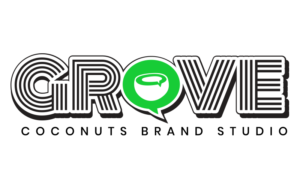
While it’s less common for news-media publishers to join hands with a single advertising holding company, the deal should allow Coconuts to tap into Stagwell’s media services and research resources and give the company access to a global client base it may not have had before. The latter could be particularly important as Grove, Coconuts’ in-house creative studio for brands, becomes an increasingly important focus for the company.
“With our publishing roots as a foundation, we are growing our creative and media-buying services and the business of serving clients as a modern creative agency,” says Perry, the company’s CEO. “Partnering with a challenger marketing network like Stagwell makes total sense as we work with larger, more complex global clients.”
Affiliate versus acquisition
What is significant about these affiliate deals is that they’re designed to be the first step on the road to a mutual acquisition agreement. This is something Stagwell made very clear when first announcing its affiliate programme a year ago.
“It’s a way to soft introduce [Coconuts] to the holding company,” Duax explains. “We’re not taking ownership, we’re not saying you have to move into this office location. For an entrepreneur, if you want to retain control, that’s the appeal.”
Since it launched a year ago, Stagwell has signed up nearly 50 affiliates, including others in APAC such as Metric Design Studio in China, Enormous in India, This is Flow in Australia, and Hong Kong-based Beyond Media Global.
Making the distinction of how these affiliate deals represent a very different approach from “top-down, holding-company acqusitions”, Duax explains the programme is designed for entrepreneurs looking for global opportunities to bring their own local opportunities and resources in return without the pressure of being forced to work for global clients and projects that they don’t want to.
Similar to the Worldwide Partners network of purely independent agencies, Stagwell’s affiliate collective is a network of successful entrepreneurs and businesses that want bigger opportunities. “You’ve got creative agencies in some of these markets who maybe have never had a media or research component,” Daux explains. “Maybe they have a client that just needs to reach into one specific market and they don’t have that connection. But they don’t [yet] want to sell to a bigger holding company. So for us it’s an opportunity to see if the partnership works out and if they can execute some of the bigger pieces of business we could bring.“
Related
Articles
Acquisition, In the News, Press Releases
Dec 30, 2024
Stagwell (STGW) Expands Digital Communications Capabilities in MENA by Agreeing to Acquire Create. Group, the Middle East’s Leading Independent Strategic Digital Communications Group

Acquisition, In the News, Press Releases
Dec 17, 2024
Stagwell (STGW) Furthers Global Expansion, Agrees to Acquire UNICEPTA, a Leading Provider of Media Intelligence

In the News, Weekly Data
Dec 05, 2024
WHAT THE DATA SAY: 20% might move if neighbors didn’t do holiday decorations
‘TIS THE SEASON TO DECK THE OUTDOORS: Holiday cheer influences…

